Chemical Blog Posts

Modeling a Solid-State Battery Cell in COMSOL Multiphysics®
Solid-state batteries offer advantages over lithium-ion batteries, making them promising technology for electric vehicles. Simulation can help battery developers investigate design challenges.

Modeling Nonidealities in Electrochemical Impedance Spectroscopy
In this blog post, we explore how to model nonidealities in electrochemical impedance spectroscopy (EIS), often used in the study of electrochemical systems.

Fine-Tuning the CVD Process with COMSOL Multiphysics®
Chemical vapor deposition is used in almost all semiconductor manufacturing processes. See how multiphysics modeling and simulation can provide more insight into this process.

Introduction to the Concentrated Electrolyte Transport Interface
COMSOL® version 6.3 introduced a new interface, which enables the modeling of electrolytes consisting of an arbitrary number of electrolyte species. Get the details here.

The Effects of Varying Solvent Compositions on Lithium-Ion Battery Aging
As lithium-ion batteries age, parasitic reactions can affect the ratio of solvents in the electrolytes. Learn how the consumption of one solvent can impact battery performance.

The Science Behind Preserving Museum Ships
Managing corrosion and decay are just 2 of the challenges associated with preserving historic vessels. Learn about the approaches that are being used to help keep these ships true to their best-known design.

Modeling Stray Currents from a Light Rail Transit System
The rails in LRT systems can induce stray currents, which may corrode nearby underground metallic structures. Learn how modeling can be used to help.

Modeling a Two-Phase Nonisothermal Zero-Gap Alkaline Water Electrolyzer
Modeling and simulation can help designers better understand alkaline water electrolyzers by providing insight into their various electrochemical and transport phenomena.

Better Brewing: Modeling Beer Fermentation
What’s brewing? Explore how modeling and simulation can be used to study the beer fermentation process, identifying ways to optimize its efficiency and serve up a better-tasting glass of suds.

Simulating Thermal Propagation in a Battery Pack
When batteries overheat, there’s more at stake than just losing the pack. By modeling thermal runaway, you can prevent problems before they arise.

Modeling Shunt Currents in an Alkaline Electrolyzer Stack
In the quest for affordable green hydrogen, alkaline electrolyzers must be efficient and long-lasting. Simulation offers insight during the design stage.

Thermochemical Conversion of Biomass Through Pyrolysis of Wood
Pyrolysis converts biomass into products such as solid charcoal, which can further be refined into hydrogen. Here, read about modeling pyrolysis with the help of parameter estimation.
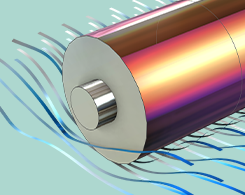
How to Define Load Cycles in Battery Models
Specifying a load profile is critical when modeling a battery system. Explore several approaches for doing so in COMSOL Multiphysics® and the Battery Design Module.
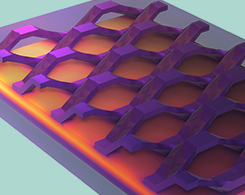
4 Examples of Fuel Cell Modeling in COMSOL Multiphysics®
To evaluate the many different aspects of fuel cell design, you can use the Fuel Cell & Electrolyzer Module. Explore 4 examples here…
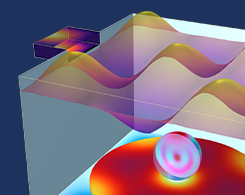
The Use of COMSOL Multiphysics® in the Food Industry
Food for thought: Explore how previously failed products and the use of multiphysics simulation inspire innovation in the food industry.

Analyzing Thermal Distribution in a Li-Ion Battery Pack
Deviating from optimal operating temperatures in a Li-ion battery pack can cause performance losses or even failure. Learn how to optimize the power design to control the temperature distribution.

The Science Behind Plant-Based Foods
You have probably heard of almond milk, coconut milk, and oat milk. But are you familiar with potato milk? This milk substitute hit grocery shelves in Europe in early 2022.

A Novel Technique for Producing Ultrastrong 2D Polymers
A group of materials science researchers have developed a new polymerization technique for producing strong and lightweight 2D polymers (a creation that was thought to be impossible!)
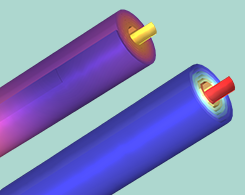
Improving Tabbing Design in Cylindrical Batteries
A major electric vehicle and battery manufacturer announced a new “tabless” design concept for cylindrical lithium-ion batteries. In this blog post, we explore this concept with simulation.

A Practical Sedimentation App for Toxicology Analysis
Sedimentation is widely used in toxicology, biochemistry, and biomedicine. You can study how gravity affects this physical phenomenon with simulation.
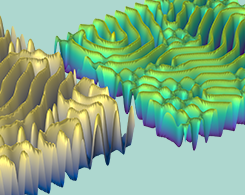
Visualizing the Emergence of Turing Patterns with Simulation
Turing patterns are often found in nature. The conditions behind the emergence of these patterns can be studied with chemical modeling.

Extracting DNA: From Pumpkins to Mammoths
Here, we go over how to recover DNA from a pumpkin using a simple experiment, as well as how scientists made a recent breakthrough in DNA extraction research.

The History and Science Behind Vinyl Records
As vinyl records explode in popularity, we take a look back at the history of records, as well as the interesting science behind how they are produced — and how they play music.

How to Model Metabolic Reaction Networks with COMSOL®
Certain ice creams, puddings, and candies have an extremely vivid yellow color that comes from vitamin B2. The manufacturing of this supplement is one example of a metabolic reaction network…
